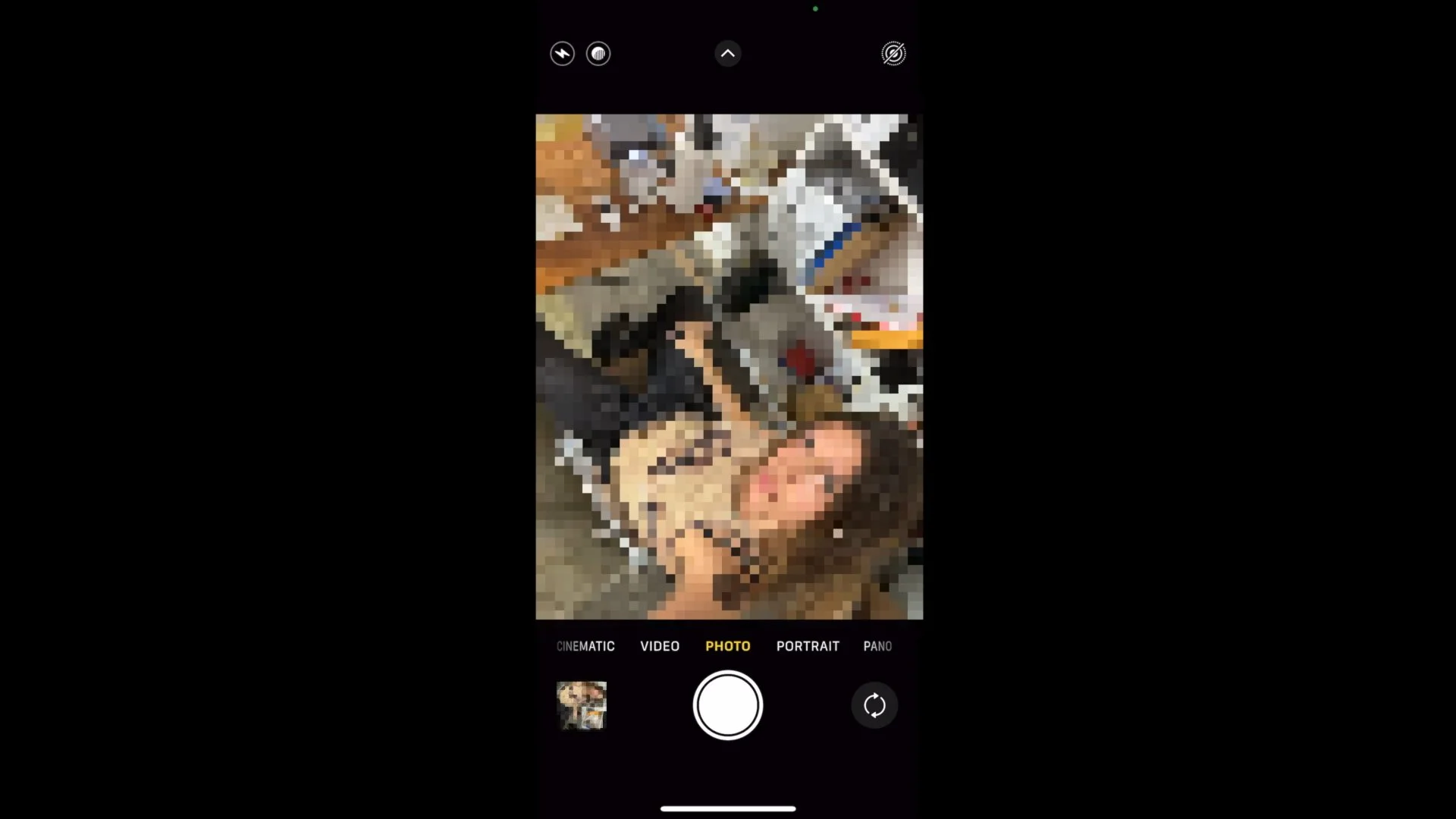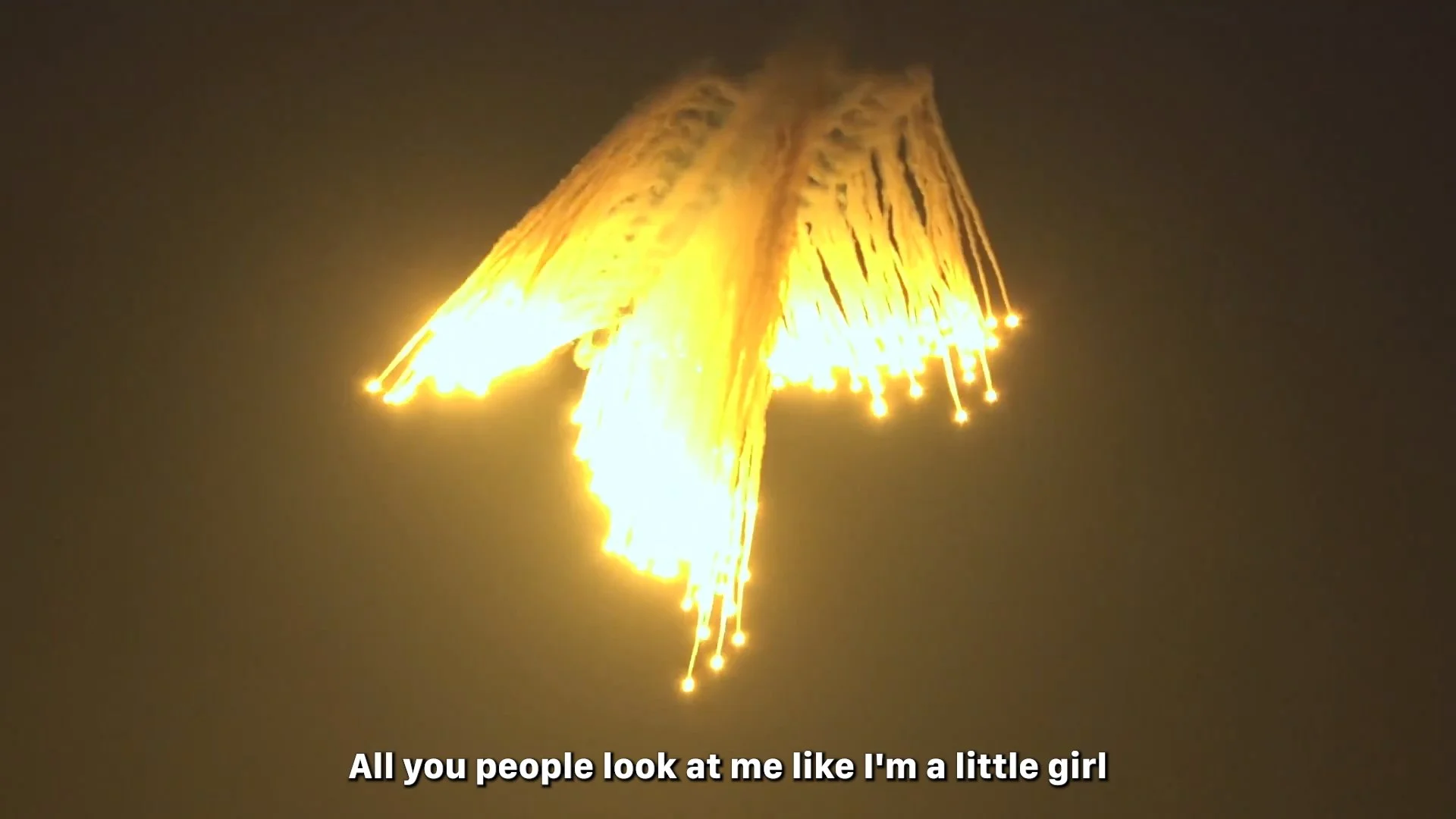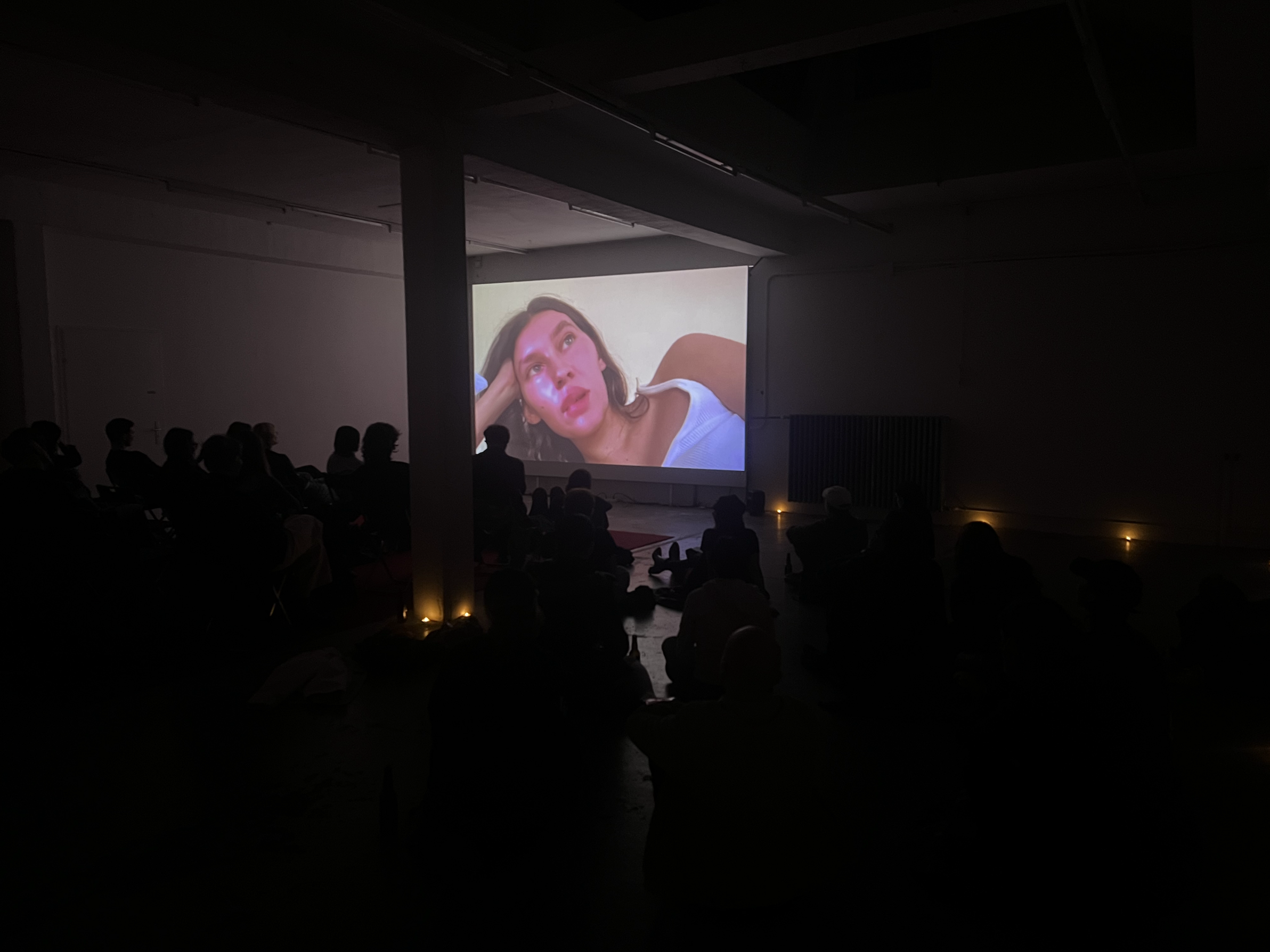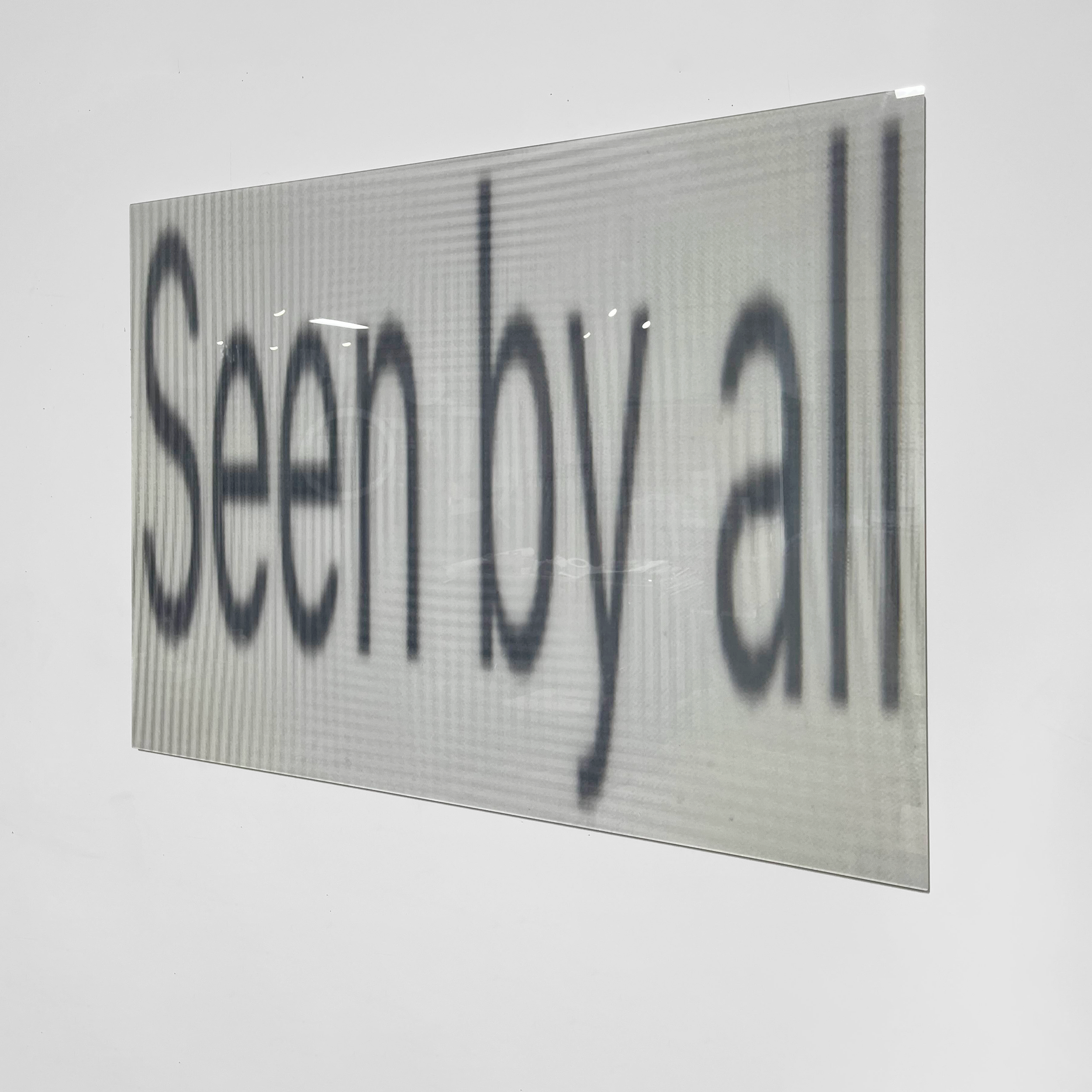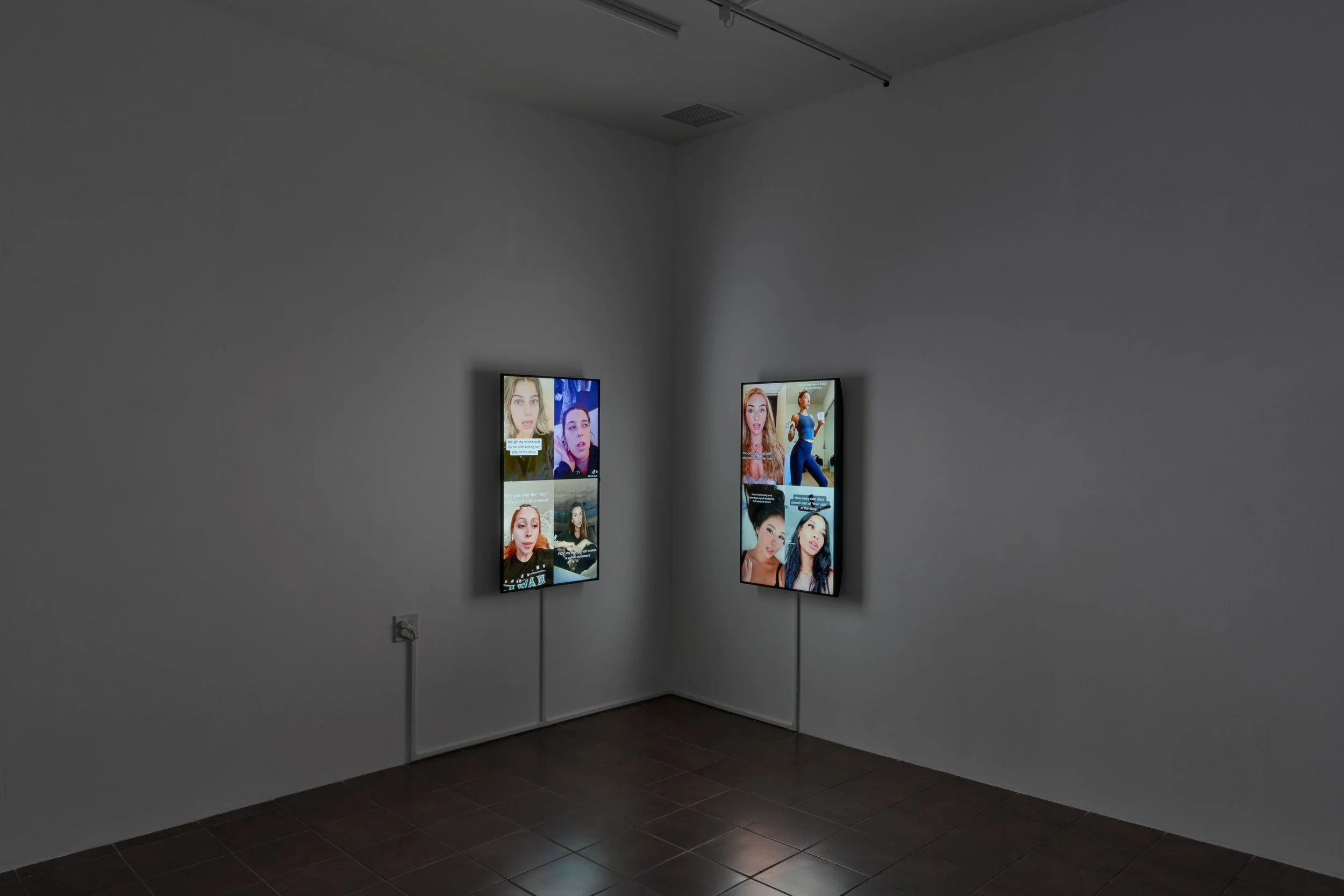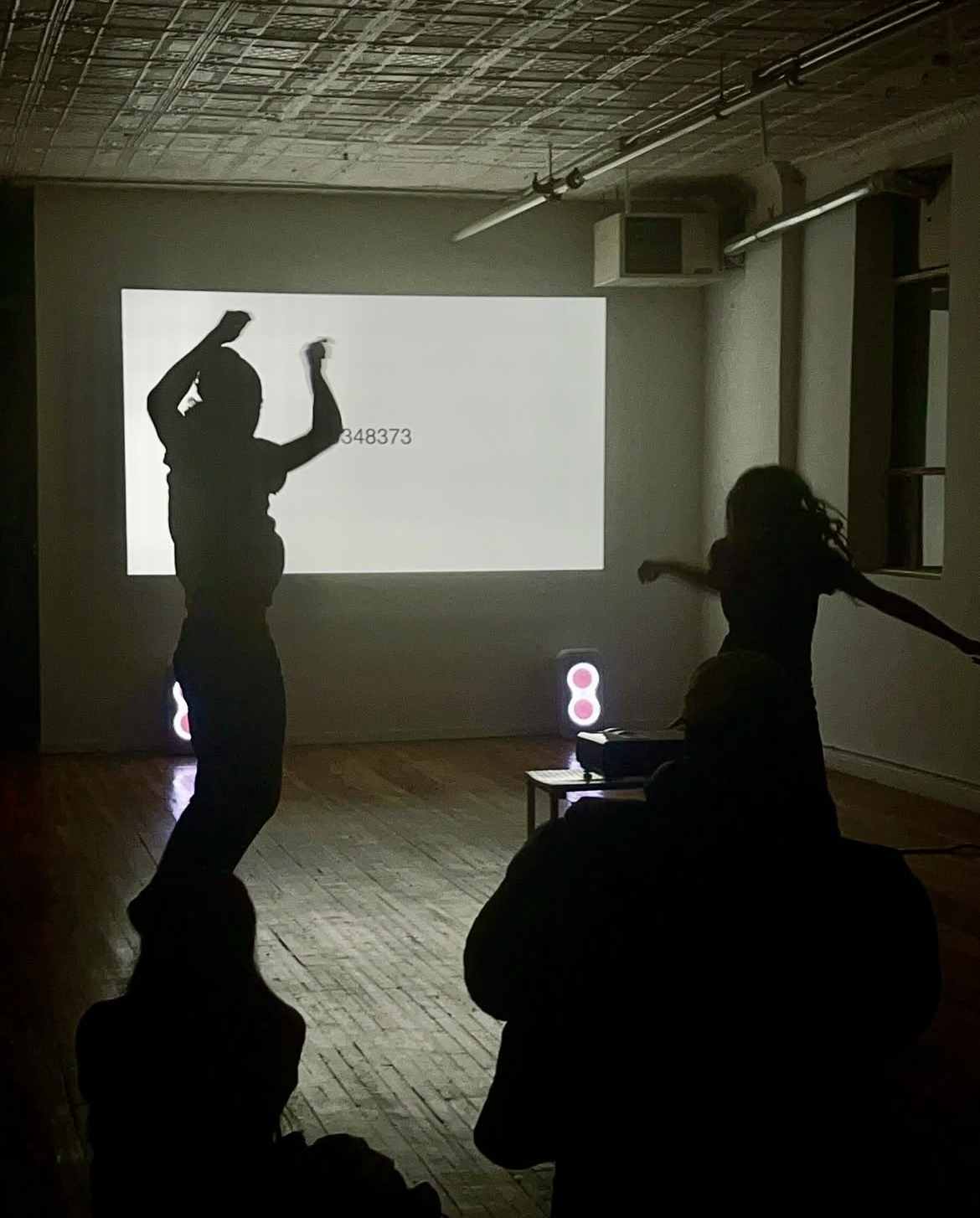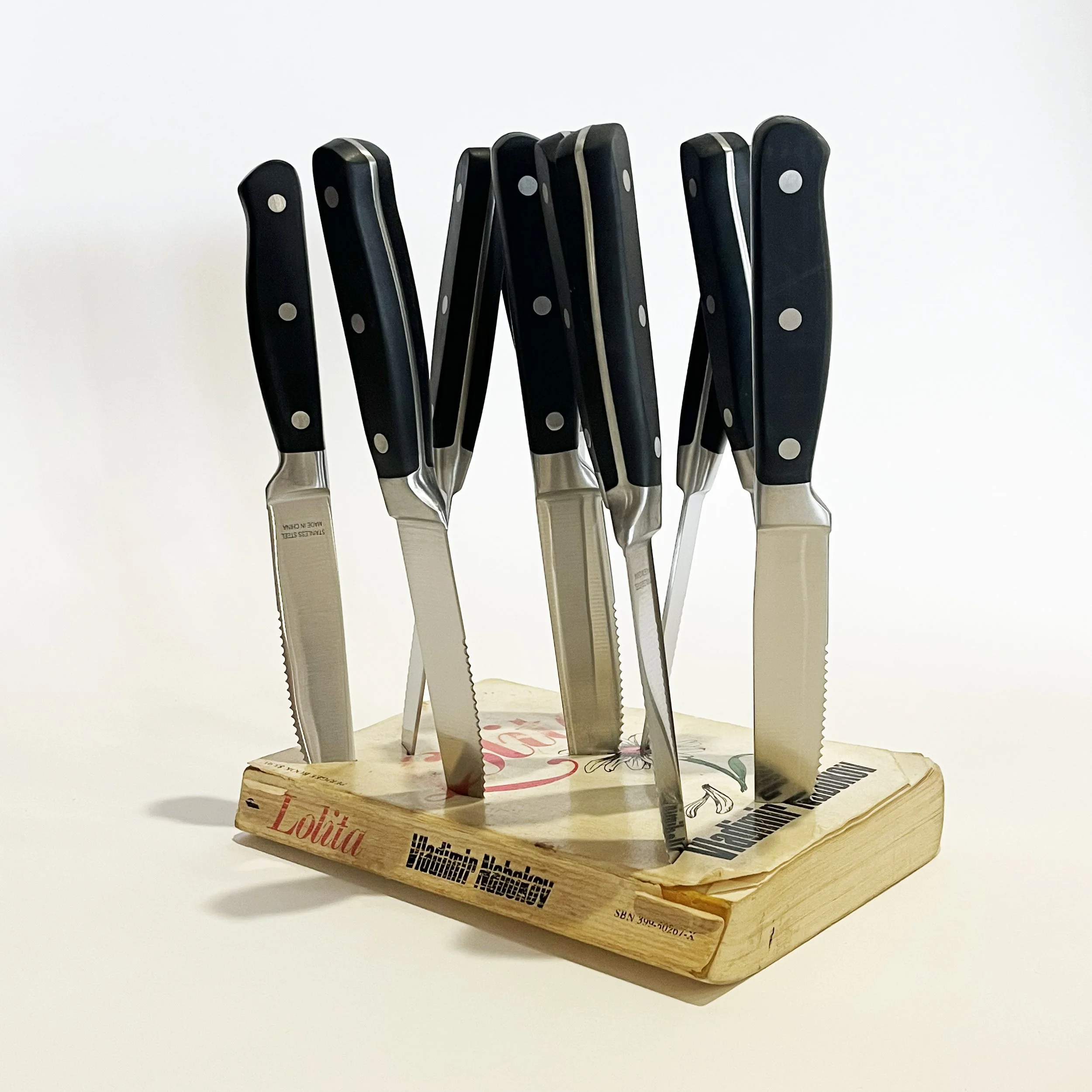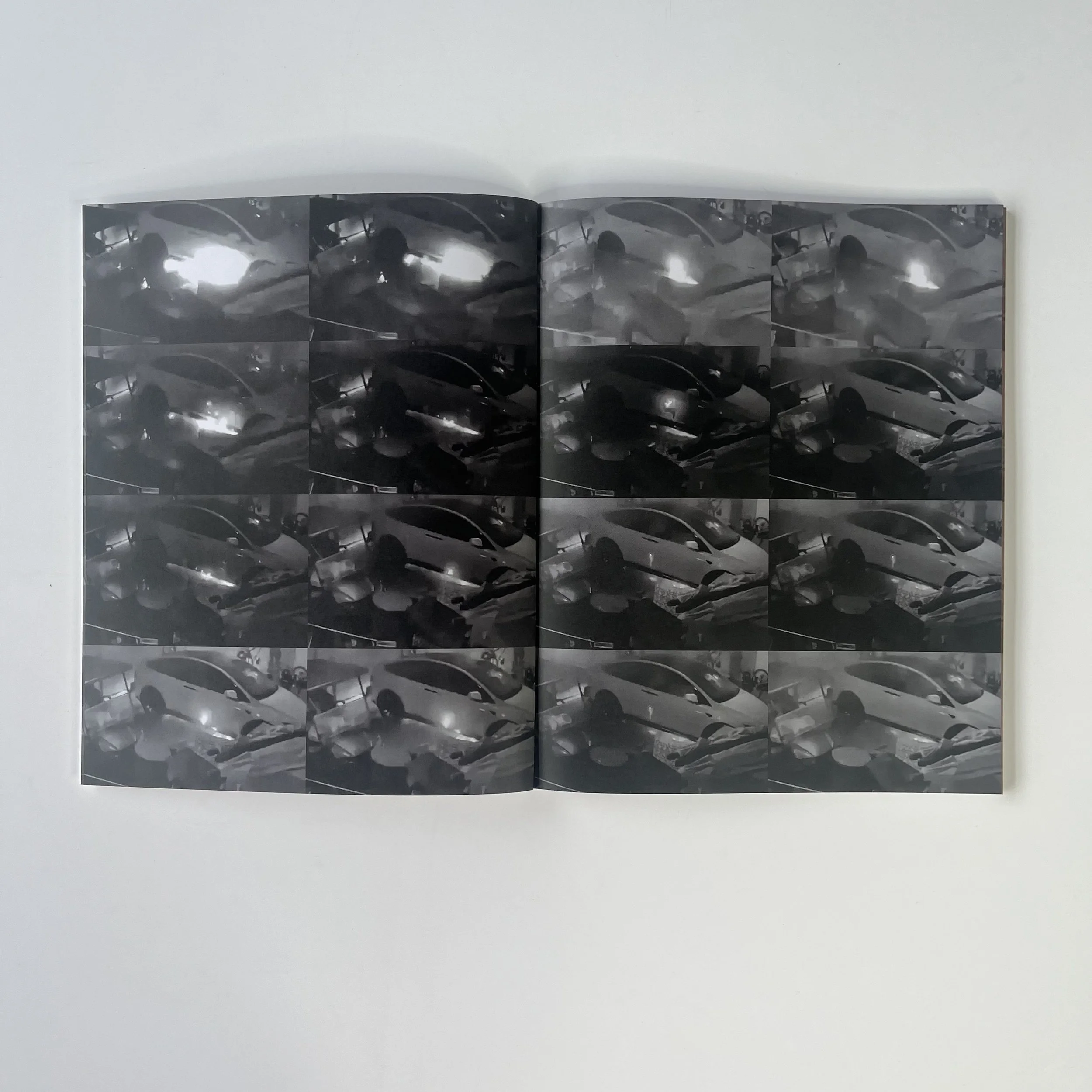Zarina Nares talks to Phillip Edward Spradley
Portrait of Zarina Nares. Courtesy of the artist
Zarina Nares is an interdisciplinary artist whose work spans video, performance, text, and print to interrogate the aesthetics and politics of contemporary identity. Her practice critically inhabits the spaces of digital culture, exploring how femininity and selfhood are constructed, circulated, and performed within algorithmic systems. Rather than observing these structures from a distance, Nares immerses herself in their textures—borrowing, mimicking, and distorting the visual grammars of online life to reveal the tensions beneath their glossy surfaces.
Central to Nares’ work is an investigation of digital femininity, not as a fixed image or role but as an unstable performance shaped by feedback loops, surveillance, desire, and repetition. Her projects often draw from influencer culture, vlogging formats, and the aesthetics of self-help and lifestyle media. These references are not simply replicated but recontextualized to expose the contradictions they carry. In her hands, the language of optimization and self-curation becomes a site of critical play, where empowerment and commodification are closely entangled.
Her tone is at once humorous and incisive. Through exaggeration, irony, and strategic sincerity, Nares constructs performances that move fluidly between critique and complicity. She avoids moral clarity in favor of ambivalence, allowing her work to remain open-ended and affectively layered. Her personas are slippery—less caricature than reflection—mirroring a culture in which identity is continuously fragmented and reshaped in pursuit of legibility. The result is a body of work that invites discomfort, recognition, and reflection.
Formal repetition and structural fragmentation are central to her methodology. Loops, glitches, refrains, and incomplete narratives echo both the architecture of digital platforms and the disjointed nature of contemporary subjectivity. Nares does not resolve these conditions; instead, she inhabits them, rendering the incoherence of the algorithmic self as both form and content. Her works resist linear time and fixed meaning, instead accumulating gesture, affect, and media debris.
In addition to conceptual inquiry, her practice engages material contradiction. Her projects move fluidly between digital and physical contexts—circulating as YouTube videos, artist books, performances, and installations. This platform-crossing reflects her interest in collapsing boundaries between screen and body, public and private, critique and participation. It also enables her work to resonate across a wide range of audiences, from internet-native viewers to those rooted in traditional exhibition spaces.
Nares studied Electronic Music, Computing, and Technology at Goldsmiths, University of London. Her work has been exhibited internationally, including at SARA’S, HEART, and Beverly’s in New York; Forma in London; and Heavy Manners Library and TIMESHARE in Los Angeles, among other institutions. She lives and works in New York.
Nares has an upcoming solo exhibition with Visit in Newburgh, on July 19, 2025 and runs through August 9, 2025.
I'm A Slave 4 U - Britney Spears (Lyrics and Acapella), 2025. Video, part of Britney (YouTube playlist), Title, Description, TRT 3:52. Courtesy of the artist
Phillip Edward Spradley: Your practice moves fluidly between video, text, performance, and print, and each medium seems to offer its own kind of intimacy or distance. Given this fluidity, how do you determine which form a project should take?
Zarina Nares: I wish I had a more clever answer, but it’s not deliberate so much as intuitive. I usually just see something in my head and follow that instinct. It doesn’t always end up the way I imagined, sometimes what starts as a video turns into a book, or vice versa, but I just start somewhere and let it take shape.
The questions I’m working through within the medium tend to stay consistent, but each form lets me test how an idea behaves in a new container, and usually reveals something slightly different. It’s those subtle shifts that excite me.
What’s really going on, 2022. Video, part of the VLOG (YouTube playlist), TRT 1:57. Courtesy of the artist
There’s a compelling tension in your work between the ephemeral nature of digital content and the tactile qualities of your physical publications. How do you think about materiality when your ideas live across both screen and page?
I think I’m drawn to materiality because so much of what I engage with online is weightless, fast, and disappearing. Making something physical feels like a way to hold onto something. It makes me feel grounded, like it’s all real, right? (panic attack ensues)
Everything we perceive, online or offline, passes through a whole network of internal filters: our upbringing, our values, our emotional history, etc. That’s always happening. But the pace and volume of digital content intensify it. We’re exposed to so much, so fast, that we don’t have time to actually feel what gets stirred up. A single post might trigger something quite deep.
Not just obvious things like polarizing politics or violence, but subtler feelings too, like jealousy, shame, or longing. And before we can register it, we’re already on to the next thing. That buildup of sensation without resolution is part of why doomscrolling feels so insane. So for me, making something physical acts like a pressure valve. It’s a kind of release. And I guess a form of acknowledgment as well.
At the same time, I don’t see digital and physical forms as opposites. They bleed into each other. A book I make might feel like an object, but its logic or aesthetic is entirely shaped by scrolling, by screenshots, by the way we consume information online. I think part of what interests me is that tension between the body and the screen and how that plays out emotionally. Some ideas want to be on YouTube, others need to be held. I try to listen to that.
I'm A Slave 4 U - Britney Spears (Lyrics and Acapella), 2025 Video, part of Britney (YouTube playlist), Title, Description, TRT 3:52. Courtesy of the artist
When developing a work that draws from social media conventions, how do you approach the line between performance and participation?
I think performance and participation are deeply entangled, that line exists with or without social media. I’ve always felt like we’re performing all the time, even offline. I mean, it’s what we’re taught to do. America is one giant performance, it curates its history, its image, its truth. Families are like miniature political systems; they can do the same thing, keeping everything looking normal on the surface. Performance is deeply ingrained in existence. We’re rewarded for it.
So It’s an ongoing debate for me: is it ever possible not to perform? Or is performance just part of how we relate, how we survive? I don’t have an answer, and honestly, the more work I make, the more unsure I become. But in that sense, it’s all a kind of ongoing experiment.
When I draw from social media conventions, I don’t feel outside them, I’m inside like everyone else. Sometimes I’m sincere, sometimes I’m performing, I’m not always aware which is which and usually it’s both. That tension becomes a negotiation of power: am I in control? What happens when you consciously participate, when you use the platform’s tools to both embody and distort its logic? I guess I’m trying to figure out if I’m playing a game, if I’m being played, or if there’s even a difference.
:(: (Seen by all), 2024. Acrylic Mounted Print, 40x30 in. Courtesy of the artist
There’s a strong singular voice in your work, yet it also feels informed by many cultural and generational currents. Do you work collaboratively in any parts of your process, or is solitude a key part of your methodology?
Solitude is definitely a big part of my practice. I spend a lot of time alone, and I think I need that time, especially because the work is already so saturated with other voices. I need the quiet to figure out which part of all that is actually mine. But at the same time, my voice is built out of other voices. I’m constantly absorbing language, tone, phrasing, and reworking it into something else. So in that sense, the process is collaborative, just not in a traditional way.
I do think about the ethics of that, what it means to work with borrowed or ambient language. Humor is one way I navigate it. But I’m never making fun of someone else. I consider myself very much implicated in the work. If you’re laughing, you’re probably laughing at me, but also maybe at yourself. There’s a kind of shared vulnerability in that, and that’s where I’m trying to live.
I Disagree, 2022 Two-channel Video, TRT 13:22 Looped. Courtesy of the artist
Repetition appears in your work both as structure and as strategy—loops, refrains, recycled aesthetics. How does repeating a gesture or phrase allow you to reshape its meaning or impact over time?
I grew up in a Sufi mosque, where meditation and chanting were a big part of my upbringing. Later, I started making beats and sampling music, so repetition has been part of my psyche from very early on.
There’s the concept of semantic satiation, when you repeat a word so many times it starts to lose its meaning. I think that’s real. You begin to sense the nothingness inside something we’ve loaded with so much significance. But there’s also a paradox: the more you repeat something, the more meanings it can reveal. It’s both. Repetition dissolves and deepens meaning. It shows how little and how much can be embedded in a single phrase, sound, gesture, or image.
Repetition cuts through the filters I mentioned earlier, our upbringing, our values, our emotional history. It bypasses the rational and hits something else. That’s a realm I’m trying to tap into, where everything becomes nothing, and nothing becomes everything.
WORK BITCH RAVE FREQUENCY HEALING MEDITATION FOR STRESS AND BURNOUT AND BECOMING YOUR BEST SELF BY LETTING GO OF YOUR PAST AND FOLLOWING YOUR TRUTH AND PUTTING IN THE HARD WORK BECAUSE YOU DESERVE IT!!!!, 2024. Installation and performance, Courtesy of the artist
Your work frequently engages with femininity as something both constructed and performed, particularly within the framework of digital platforms. Do you see your interventions as critiques, affirmations, or something more ambiguous in their relationship to online femininity?
I think the answer is somewhere in between, or maybe beside, critique and affirmation. I’m not attempting to offer a clean commentary on femininity as it exists online. One voice in me says: who am I to do that? Another voice says: there’s no such thing. What I am interested in is inhabiting it, leaning into its aesthetics, its contradictions, its emotional charge, and seeing what happens when I push it just slightly off-center.
Sometimes the work exaggerates certain tropes to the point of discomfort, other times it treats them with real sincerity. I think both can be true at once. But online femininity is so layered. It’s performance, it’s survival, it’s play, it’s labor. I’m really just trying to figure out my own relationship to femininity, both on and offline.
Ten of Swords, 2025. Sculpture, 10 steak knives, Lolita by Vladimir Nabokov. Courtesy of the artist
There’s often a push and pull between humor and discomfort in your work—moments that feel both playful and unsettling. Is contradiction something you deliberately pursue as a conceptual device, or does it emerge naturally from your engagement with culture?
I feel like I keep saying “both,” but… it’s both. Contradiction is definitely something I use deliberately, it’s how I see the world: one giant contradiction. But I also think it emerges naturally for the same reason.
I think about this Žižek quote a lot: “Our theories of reality are paradoxical not because reality is beyond our grasp, but because reality itself is ontologically unfinished. Encountering contradictions are proof of touching the real.”
The humor and discomfort in the work often live side by side because, to me, they can be one and the same. Are they always? I’m not sure. I do think it’s important to feel the full weight of discomfort. We can meme our way through darkness, but at some point, we also have to sit with it. We just don’t need to stay there forever. Humor makes discomfort survivable, discomfort gives humor stakes. I just got off the phone with my sister where I laughed and cried in the same sentence. So yes, contradiction is a device, but it’s also just what’s there.
The personas you embody never feel entirely satirical or entirely sincere. They seem to oscillate, offering glimpses of vulnerability while also remaining slippery. How do you relate to these constructed selves—as characters, vessels, masks, or mirrors?
I feel like now is the time I say I did improv as a kid lol. So personas have always made sense to me as a tool or material. I think of them less as characters though and more as extensions or versions of myself that are amplified, filtered, distorted. They’re not masks but they’re not fully transparent either.
Sometimes I use a persona to say something I wouldn’t, or feel I couldn’t, say directly. Other times, the persona ends up revealing something truer than I could express in my own voice. But they’re slippery on purpose, they allow me to hold instability without trying to resolve it. They’re a bit like looking into a warped mirror, creepy at first, but the longer I look, the more I start to find myself in there.
EVERYTHING HAS CHANGED NOTHING HAS CHANGED, 2024. Book, 8 x 10 inches, Paperback, Perfect Binding, 128 pages. Edition of 25. Courtesy of the artist
In an environment where identity is increasingly curated and flattened by algorithmic visibility, your work seems to reclaim complexity and contradiction. How do you define or disrupt the notion of "authenticity" in this space?
Ahhh, this is a hard question—mostly because I’m always actively asking it myself.
I don’t think authenticity is a fixed thing. Right now, I understand it more as a kind of symptom, a trace of being in touch with oneself. In algorithmic spaces, where everything is engineered for visibility, “authenticity” often just means being legible in a particular way.
If we take the dictionary definition—“of undisputed origin”—that feels impossible unless you believe in a soul that exists outside of time and influence (which I do, but that’s a longer conversation). Otherwise, how can anything be untouched by experience, culture, or feedback loops? So the question of authenticity becomes metaphysical for me quite quickly…as do most things…
That’s why the work keeps circling questions like: Does it matter if sincerity is constructed, if it still feels real? If a persona reveals something true, does it matter whether it’s “me”? What even is “me”? What even is truth? lol.
SIREN, 2024. Book, Paperback, Perfect Binding, 8 x 10 inches, 72 pages Edition of 5. Courtesy of the artist
Your projects often avoid resolution or narrative closure, instead embracing fragmentation and repetition. Do you see this structure as reflective of digital subjectivity, or is it a broader philosophical position you’re taking toward meaning-making?
Ha, both.
Fragmentation and repetition reflect how I experience being online, but also how I experience existence. Meaning never arrives all at once; it loops, builds, glitches, slips. It feels like we’re flooded with answers from the moment we’re born. We’re taught to chase them, defend them, and get angry when someone threatens the ones we’ve inherited. But answers, resolution, meaning, none of that is really linear or conclusive. Narrative closure is definitely comforting, but it’s not how reality works.
I’m more interested in what it means to sit with uncertainty, and to be okay not knowing. I say “interested” because I’m not very good at it. But it’s something I’m trying to get better at. So I make work that puts me in that space. Maybe it’s a coping mechanism, because the world feels intense a lot of the time. But maybe it also allows someone else to feel that too. We don’t have to have the same answers to sit together in the unknown.
To learn more about Zarina Nares visit her Instagram and website.
